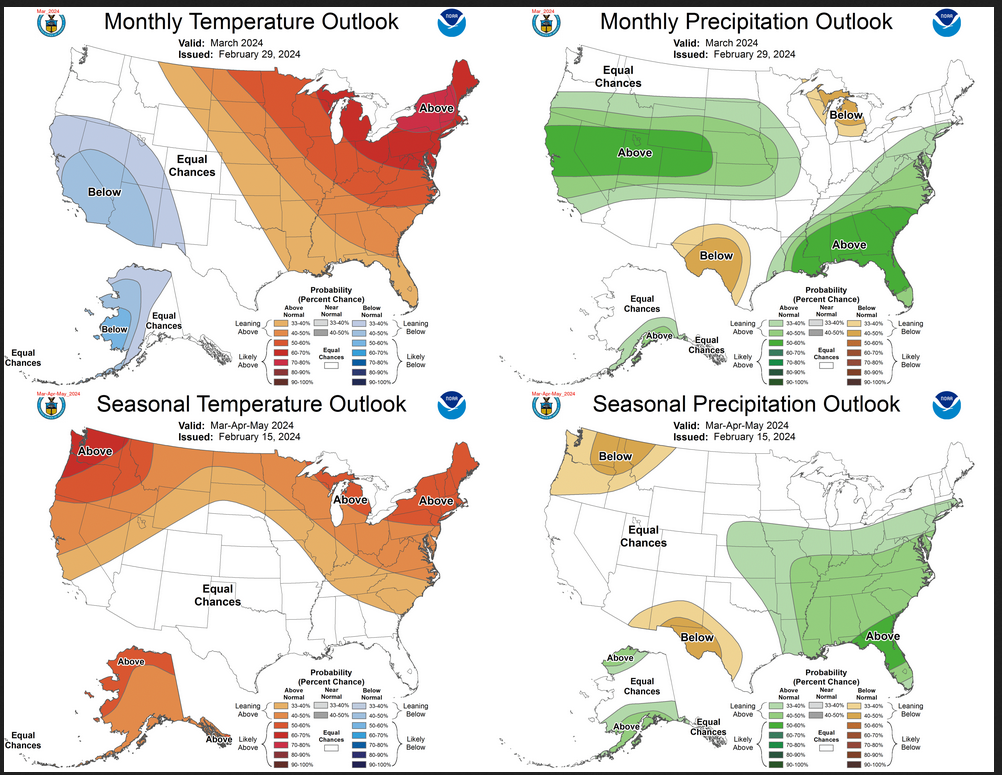Today Through the Fourth Friday (22 to 28 days) Weather Outlook for the U.S. and a Six-Day Forecast for the World: posted March 9, 2024
It is difficult to find a more comprehensive Weather Outlook anywhere else with the ability to get a local 10-day Forecast also.
This article focuses on what we are paying attention to in the next 48 to 72 hours. The article also includes weather maps for longer-term U.S. outlooks and a six-day World weather outlook which can be very useful for travelers.
First the NWS Short Range Forecast. The afternoon NWS text update can be found here but it is unlikely to have changed very much. The images in this article automatically update.
Short Range Forecast Discussion
NWS Weather Prediction Center College Park MD
Sat Mar 09 2024
Valid 12Z Sat Mar 09 2024 – 12Z Mon Mar 11 2024…Heavy rain and some severe weather expected to move across the
Southeast today followed by heavy rain and strong winds across the
Mid-Atlantic and southern New England tonight into Sunday morning……Wet snow and strong winds across northern New England from tonight
through much of Sunday followed by lake-effect snows across the lower
Great Lakes into Monday morning……Frequent rounds of lower-elevation rain and mountain snow expected to
reach the Pacific Northwest through the next couple of days…A complex interaction among a cold air mass dipping into the mid-section
of the country, an amplifying upper-level trough, moist air from the Gulf
of Mexico ingesting into the South, and a subtropical jet stream will
bring widespread increment weather through the eastern U.S. into Sunday.
The heaviest rainfall is expected to be found across the Southeast where
some of the thunderstorms could become severe. The Weather Prediction
Center has a Slight Risk of excessive rainfall forecast for the eastern
Carolinas for today. The low pressure center that forms and intensifies
along the southern front is forecast to track up the East Coast and reach
southern New England by early on Sunday. Areas from central Appalachians
into southern New England are expected to see a period of moderate to
occasionally heavy rain later today into early Sunday as the low pressure
center passes just to the southeast. Farther inland, colder air wrapping
around the intensifying storm will support wet snow across northern New
England during the same time period. This will be followed by lake-effect
snows across the lower Great Lakes into Monday morning when colder air
pours in behind the big low. Strong and gusty winds will expand and then
engulf the entire northeastern U.S. as the big low intensifies further and
begins to exit into the Canadian Maritimes by Monday morning.In the wake of the storminess in the East, high pressure will take over
the entire central and southern U.S. with dry conditions persisting into
the new work week. The dry weather will extend into much of the western
U.S. as well. However, moisture associated with the next Pacific system
is forecast to reach the Pacific Northwest in a hurry today in the form of
lower-elevation rain and mountain snow for rather high elevations. More
systems arriving from the Pacific will result in frequent rounds of
precipitation persisting across the western portions of Washington,
Oregon, and down into northern California. The Cascades and higher
terrain of northern California will likely receive a couple more feet of
new snow through Monday.Temperatures will generally be cooler than normal across the South but
above normal across the North. The East will be milder than normal today
ahead of the intensifying low pressure system before colder air surges
into the region on Sunday. Temperatures across the West will average near
normal.

